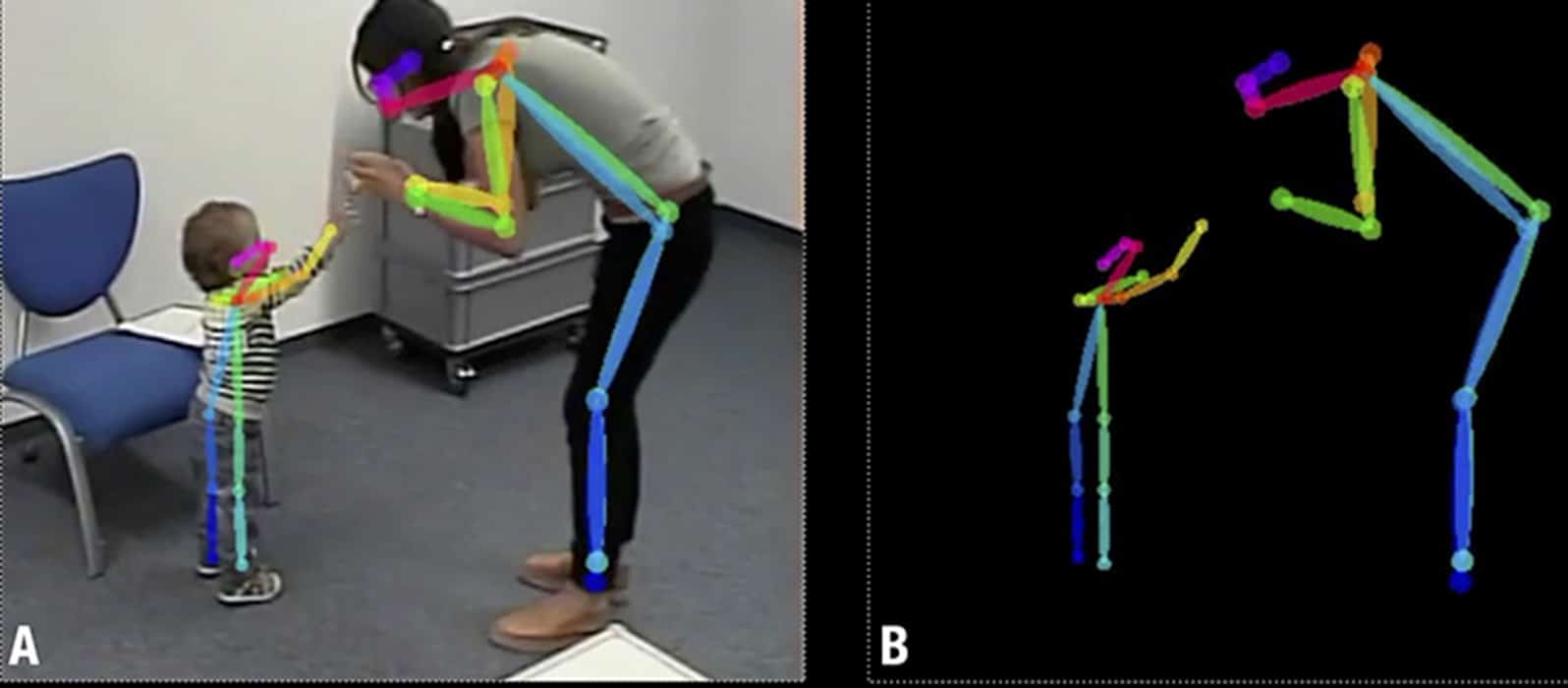
Children with Autism Spectrum Disorder experience often experience communication and interaction issues. Despite being frequent, this disorder is quite challenging to diagnose before the age of five.
Scientists at the University of Geneva now have come up with an AI algorithm based on the automated analysis of videos, making it possible to study children’s non-verbal communication in an anonymous and standardized manner.
Nada Kojovic, a researcher in Marie Schaer’s team and first author of the study, said, “Autism is characterized by a non-verbal communication that differs from that of a typically- developing child. It differs on several points, such as the difficulty in establishing eye contact, smiling, pointing to objects or the way they are interested in what surrounds them.”
“This is why we designed an algorithm using artificial intelligence that analyses the children’s movements on video and identifies whether or not they are characteristic of autism spectrum disorder.”
This new technology is easy to use. During experiments, it correctly classified 80% of cases from short videos showing a child with or without Autism under five playing with an adult.
The algorithm aims to classify videos based solely on the child’s movements when interacting with another person. To develop this, scientists first used a technology called OpenPose that extracts the skeletons of moving people as captured in a video and allows the analysis of gestures by removing all characteristics that could be discriminating.
Scientists then tailored the algorithm to detect Autism. They tested it on 68 typically developing children and 68 children with Autism, all under five years.
Thomas Maillart, a researcher at the Institute of Information Sciences and a faculty member at the Geneva School Economics and Management (GSEM), said, “We divided each group into two: the first 34 in each group ‘trained’ our AI to differentiate the non-verbal behavior of children with and without Autism. The others then helped us test its accuracy. We also assessed 101 other children.”
Nada Kojovic said, “The AI sifted through videos of children playing freely with an adult. There is no pre-established scenario. It is a matter of analyzing the children’s non-verbal behavior freely while providing them with various objects that will make it possible to determine the presence or absence of an autistic disorder.”
“The results show that the AI makes accurate autism classification in more than 80% of cases. This is an excellent result, enthuses Marie Schaer. In 10 minutes, we can indeed obtain a first screening accessible to anyone, wherever they live. This would allow parents worried about their young children to obtain an initial automated assessment of the symptoms of Autism. It is of course not perfect, but could constitute a first step to be confirmed by a consultation with a specialist.”
“In addition, this automated video analysis offers complete anonymity. This is precious, not only for the exchange of videos between specialists to refine a diagnosis but also for training students.”
Nada Kojovic said, “It should be noted that this technology does not require any direct intervention on the child. The installation of movement sensors is time-consuming and sensitive; it can also disturb the children and influence the results. Here, the computer vision-based analysis is non-invasive.”
“Moreover, as it does not require any specific setup, the algorithm can be used to analyze videos recorded in the past, a clear advantage for research purposes.”
Thomas Maillartaid, “The aim of the multidisciplinary team, is now to make this AI available to everyone. We now wish to develop an application that would allow such as analysis with only a 10 minutes video filmed with a smartphone.”
Journal Reference:
- Kojovic, N., Natraj, S., Mohanty, S.P. et al. Using 2D video-based pose estimation for automated prediction of autism spectrum disorders in young children. Sci Rep 11, 15069 (2021). DOI: 10.1038/s41598-021-94378-z
"device" - Google News
September 06, 2021 at 04:20PM
https://ift.tt/2WVT7Xw
Using AI, scientists developed a device to detect autism - Tech Explorist
"device" - Google News
https://ift.tt/2KSbrrl
https://ift.tt/2YsSbsy
Bagikan Berita Ini














0 Response to "Using AI, scientists developed a device to detect autism - Tech Explorist"
Post a Comment